SOURCE: AFI
Indian External Affairs Minister S. Jaishankar has announced that New Delhi and Moscow are in the process of identifying additional sites for the construction of Russian-built nuclear reactors in India. Speaking at an event in Mumbai, Jaishankar highlighted the ongoing collaboration between the two nations, particularly emphasizing the significant progress made at the Kudankulam Nuclear Power Plant (KKNPP) in Tamil Nadu.
Kudankulam, India’s largest nuclear power plant, has seen substantial development with the help of Russia’s state-owned nuclear energy corporation, Rosatom. Four reactors, each with a capacity of 1,000 Megawatts (MW), are already operational at the site. In December, India and Russia reached an agreement to construct two additional reactors, further enhancing the plant’s capacity and reinforcing the strategic partnership between the two countries in the energy sector.
Continue readingSOURCE: AFI
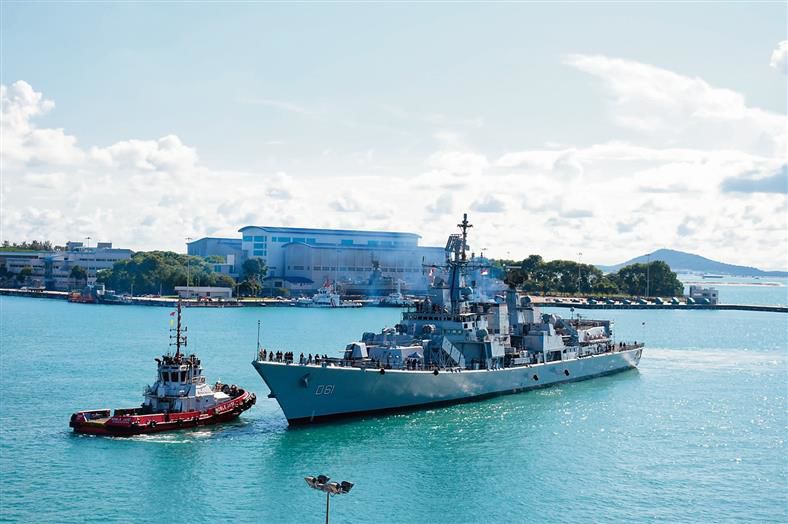
India has deployed warships to the South China Sea this month, in a move seen by analysts as a subtle message to China about the importance of respecting international law. While there’s a potential for China to react aggressively, observers in New Delhi say countries in the region have welcomed India’s presence.
Three Indian vessels, the guided-missile destroyer INS Delhi, fleet tanker INS Shakti, and anti-submarine corvette INS Kiltan, arrived in Singapore on May 6th. Indian Navy spokesman Commander Vivek Madhwal stated the purpose was to strengthen “friendship and cooperation.”
Continue readingSOURCE: AFI

Recently, a large number of 4×4 multipurpose tractors in army green were spotted on the road, hinting at a major delivery to the Indian Army. This significant development aligns with a recent ?550 crore order fulfilled by Indian manufacturer ACE for these versatile tractors.
These 4×4 tractors are designed for a variety of purposes, thanks to their ability to handle different attachments. This adaptability makes them ideal for the diverse needs of the Indian Army.
Continue readingSOURCE: IDRW.ORG.
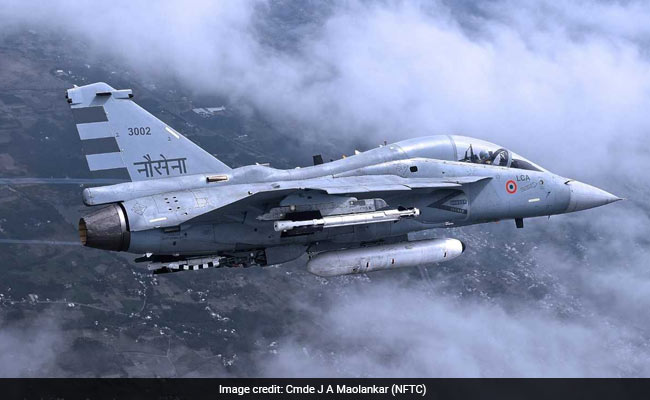
The Defence Research and Development Organisation’s (DRDO) CSIR-Central Scientific Instruments Organisation (CSIR-CSIO) is looking to procure Head Up Display (HUD) Mk1N-NP and Bore Sighting Equipment for the Naval Light Combat Aircraft (LCA).
A Head-Up Display (HUD) is a critical component of a fighter aircraft’s cockpit. It projects vital flight information, sensor data, and navigation cues onto a transparent display, allowing pilots to view this information without diverting their gaze from their surroundings. This is particularly advantageous during high-speed maneuvers, landings, and combat situations, where split-second decisions are crucial.
Continue readingSOURCE: IDRW.ORG.

The P-72, a new assault rifle by SSS Defence, is making waves in the Indian defense industry. This homegrown weapon chambered in the popular 7.62x39mm caliber offers a compelling option for Indian paramilitary organizations.
The P-72 boasts select-fire capability, allowing for controlled single shots in semi-automatic mode or rapid fire in full-automatic mode. The operating system utilizes a short-stroke piston system, known for its reliability and reduced gas blowback. This translates to smoother operation and less fouling for the user.
Continue readingSOURCE: AFI

Images captured at HAL facilities in Bangalore have revealed the Tapas UAV in Tipnis Grey undergoing production. This indigenous unmanned aerial vehicle (UAV) is receiving significant modifications to enhance its operational capabilities.
The key aspect of the Tapas UAV’s ongoing development is weight reduction and drag reduction. These measures are crucial for achieving the Indian armed forces’ requirement of operating the UAV at over 30,000 feet.
Continue readingSOURCE: AFI
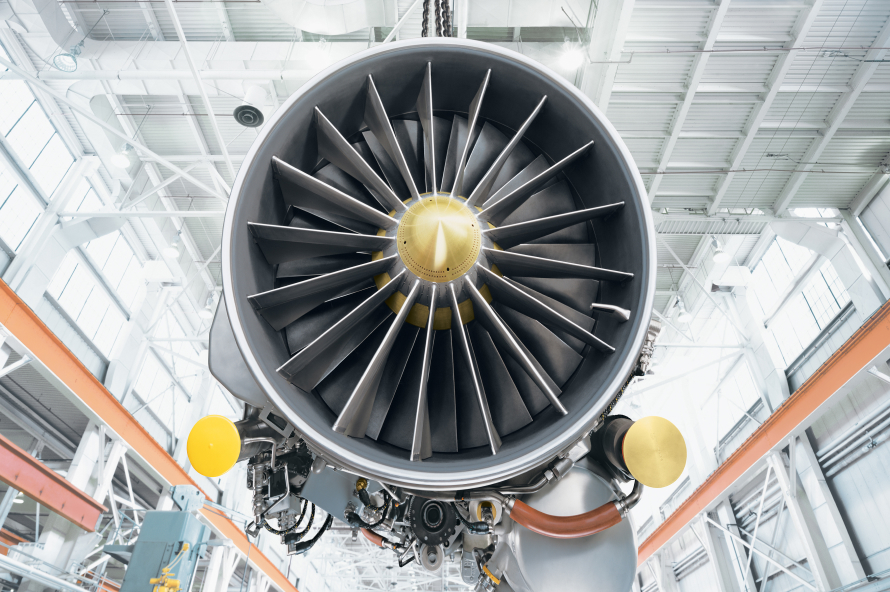
Hindustan Aeronautics Limited (HAL) has announced that negotiations are still underway with General Electric (GE) regarding the local manufacturing of the F-414 engine in India. This engine is pivotal for the Tejas MkII fighter jet program and the Advanced Medium Combat Aircraft (AMCA) MkI project. While the discussions continue, GE has confirmed that it will retain the Intellectual Property Rights (IPR) for the engine. Additionally, any export of fighter jets equipped with the F-414 engine will require export clearance from the United States.
The F-414 engine is a high-performance turbofan engine known for its reliability and advanced technology. It is designed to provide superior thrust and efficiency, making it an ideal choice for the next generation of Indian fighter jets. The Tejas MkII and AMCA MkI programs are central to India’s efforts to modernize its air force and enhance its indigenous defense manufacturing capabilities.
Continue readingSOURCE: AFI

VAdm Krishna Swaminathan, VCNS, visited Aeronautical Development Establishment (ADE), Hindustan Aeronautics Limited (HAL) & Electronics Research and Development Establishment (LRDE) at Bengaluru on 18May 24.
Discussions were held with Director Generals of ADE & LRDE, and CMD, HAL on wide-ranging subjects with emphasis on indigenisation, future projects & collaborative efforts necessary to enable timely delivery of advanced systems to the Indian Navy.
Continue readingSOURCE: AFI

Security forces in Jammu and Kashmir have received a significant boost in their fight against terrorism and other criminal activities with the deployment of Artificial Intelligence (AI). This innovative technology is being used to track wanted individuals, including terrorists, their Over Ground Workers (OGWs), and other criminals.
Marking a step forward in “smart policing,” the Jammu and Kashmir Police have implemented a cutting-edge AI-based facial recognition system at the Navyug Tunnel Qazigund. This strategic location serves as the main entry and exit point for the Kashmir Valley.
Continue readingSOURCE: RAUNAK KUNDE / NEWS BEAT / IDRW.ORG
The Indian Air Force (IAF) is gearing up to bolster its offensive capabilities with a proposal to acquire nearly 200 New Generation Anti-Radiation Missiles (NGARM), also known as Rudram-I. The Rudram-I is an air-to-surface missile designed to neutralize enemy air defence systems, including surveillance and tracking radars as well as communication infrastructure. This empowers the IAF to effectively suppress enemy air defenses, paving the way for unhindered operations in contested airspace.
The Rudram-I boasts a sophisticated dual-seeker configuration. It employs a passive homing head seeker that detects and homes in on enemy radar emissions, making it effective against active radar systems. Additionally, a Millimeter Wave (MMW) seeker equips the missile to target even passive radar systems, further enhancing its operational flexibility.
Continue readingSOURCE: RAUNAK KUNDE / NEWS BEAT / IDRW.ORG
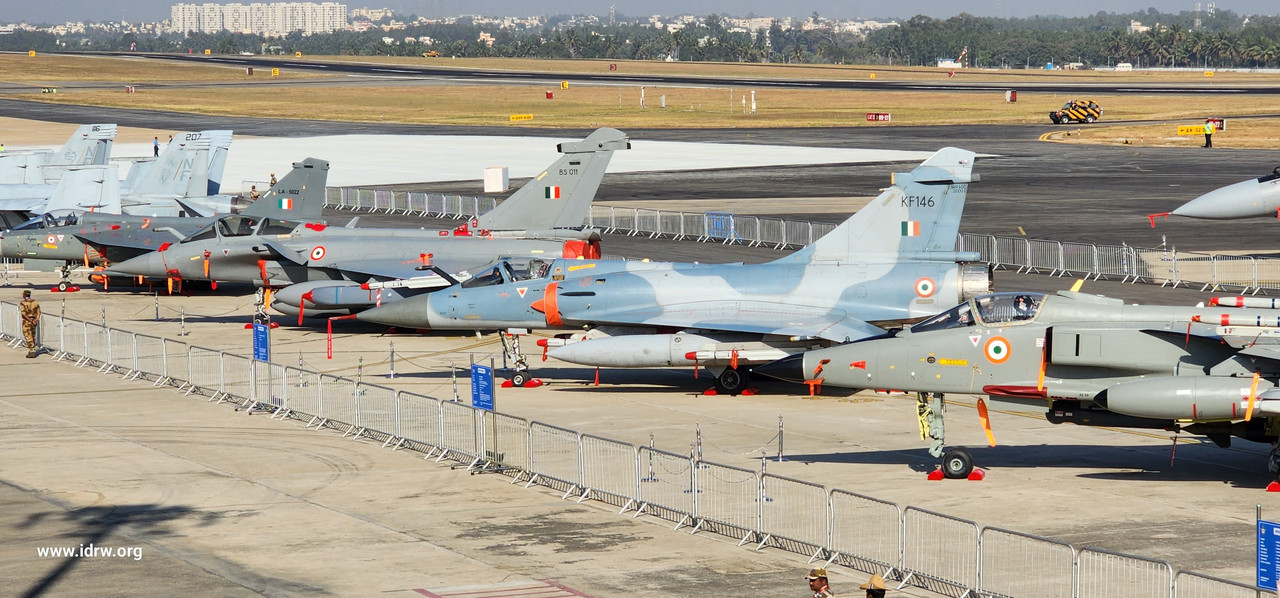
The Indian Air Force’s (IAF) Mirage 2000 fighter jet has been a mainstay for decades, playing a crucial role in air defence and even forming part of India’s nuclear triad – the ability to deliver nuclear weapons by air, land, and sea.
The Mirage 2000 is capable of carrying a single nuclear weapon – a 20-kiloton bomb, exceeding the destructive power of the bomb used on Hiroshima. While details remain classified, modifications were reportedly made two decades ago to accommodate this weapon on the aircraft’s fuselage.
Continue readingSOURCE: RAUNAK KUNDE / NEWS BEAT / IDRW.ORG

The Indian Air Force (IAF) is gearing up for a strategic shift in its maintenance practices. The force has formulated a plan to outsource a portion of the repair and overhaul process for its fleet of AN-32 tactical transport aircraft to private Indian companies.
This initiative aims to overhaul 60 AN-32s by the end of the 2028-29 fiscal year, with an average of 15 aircraft completed per overhaul cycle. The IAF will outsource five of the 11 stages involved in the overhaul process. These stages include the disassembly of subsystems and components, cleaning and paint removal, structural repairs and refurbishment, reassembly of subsystems, and final painting.
Continue readingSOURCE: IDRW.ORG.

High Commissioner of India to Malaysia, H.E. Shri B N Reddy, inaugurated the BrahMos Pavilion on the opening day of DSA & NATSEC Asia, in the presence of Addl. Secretary, Defence Production India Shri T. Natarajan. The event showcased India’s defense exports and provided a platform for potential collaborations.
The BrahMos Corporation, a joint venture between India and Russia, was a key highlight at the event. They offered their BrahMos-A air launched cruise missile for integration with the Royal Malaysian Air Force’s Su-30MKM fighter jets. Additionally, the BrahMos ship-launched variant was also presented as an option for Malaysia’s naval defense.
Continue readingSOURCE: IDRW.ORG.

Yantra India Limited (YIL), through its Ordnance Factory Ambajha (OFAJ) facility, has achieved a significant milestone by dispatching the first consignment of an export order for 155mm M 107 shells. This accomplishment marks a promising start for the new financial year and propels OFAJ towards a foothold in the global defense market.
The successful dispatch is attributed to the visionary leadership of Executive Director/OFAJ, Shri Anjan K. Mishra. This export order represents a major step forward for YIL, one of India’s crucial Ordnance Factories. The entire team at OFAJ takes immense pride in this achievement.
Continue readingSOURCE: RAUNAK KUNDE / NEWS BEAT / IDRW.ORG
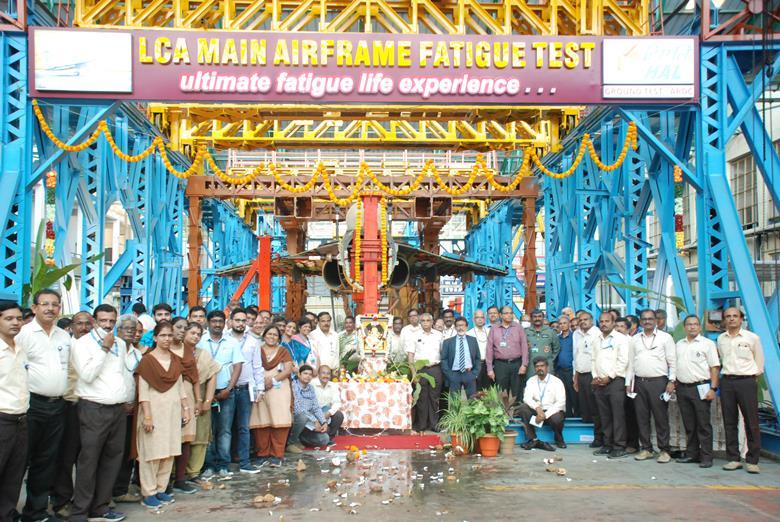
Hindustan Aeronautics Limited (HAL) is putting the LCA-Tejas Mk1A fighter jet through its paces in a critical airframe fatigue testing program. This initiative, launched in 2022 at the newly established Main Airframe Fatigue Test (MAFT) facility in Bengaluru, is designed to ensure the aircraft’s structural integrity and longevity.
The MAFT program involves subjecting a Tejas Mk1 airframe to simulated flight conditions that accelerate the ageing process. This is achieved by meticulously replicating the stresses and strains experienced by the aircraft during various maneuvers. Over eight to nine years, the test airframe will endure an equivalent of 8,000 hours of flight time – a significantly higher rate than actual operations, which typically involve around 200 hours per year.
Continue reading